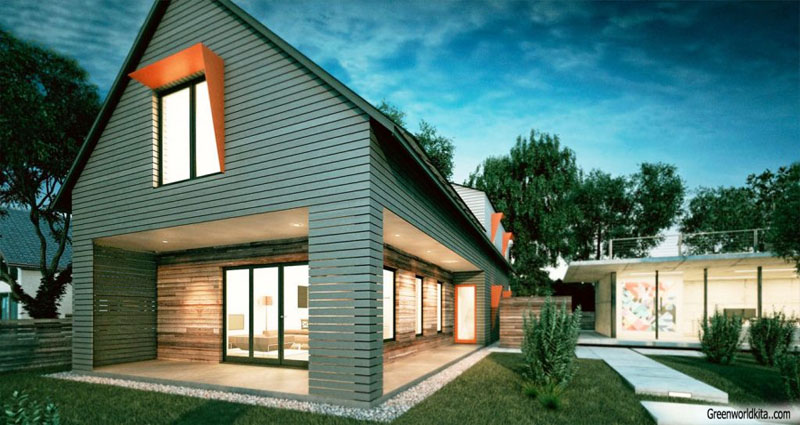Zero-Energy homes and buildings are becoming more and more desirable when considering the spiraling energy costs and substantial savings that may be realized over time. Not to mention environmental and health benefits that provide additional reasons to build a Zero-Energy home. With the tax credits and rebates that are now available, alternative building and solar energy are now more feasible than ever.
Here is a list of 10 reasons to build a Zero-Energy home:
- Zero-Energy homes and buildings offset the energy they use from the power grid with energy produced from renewable sources such as solar electric and solar-thermal systems. Because of the reduced energy consumption and capacity to create electricity and send it back into the grid, the net result is that the energy created equals the energy used.
- With Zero-Energy home construction methods homeowners benefit from energy efficiency and lower utility costs, increased comfort, better indoor air quality, increased resale value, and a sense of environmental responsibility.
- Utility companies benefit from less peak demand and a more stable grid as well as meeting their renewable production targets and quotas.
- Public benefits from reduced air emissions, less reliance on energy imports, and a reduction in the vulnerability of the energy infrastructure. As fossil-fuel sources become depleted and energy prices climb, Zero Energy becomes more and more of a necessity.
- Two basic elements in building Zero-Energy homes: –First is the design and performance of the home’s thermal, heating, cooling, and lighting systems. This includes passive solar, shade structures, the type and amount of insulation and air infiltration, the efficiency of the appliances, and the amount of electricity or gas used by these systems. –The other component is the use of active renewable-energy technologies including solar water heating and storage, photovoltaics, wind power, small-scale hydropower, and fuel cells.
- 6.The cost and aesthetics of fluorescent lighting have improved dramatically.
- Using spray foam for roofing systems and in-the-wall insulation systems increases the thermal performance of a building.
- Appliances are becoming much more efficient.
- Photovoltaic panels produce more electricity and are less expensive. However, there are still cost barriers to solar thermal and photovoltaic technology being rapidly embraced, especially given that property appraisals often under-value the added features.
- There may be state and federal tax credits and rebates for active solar-thermal and photovoltaic systems.
Between the tax credit and the rebate, solar energy is now more feasible than ever.












